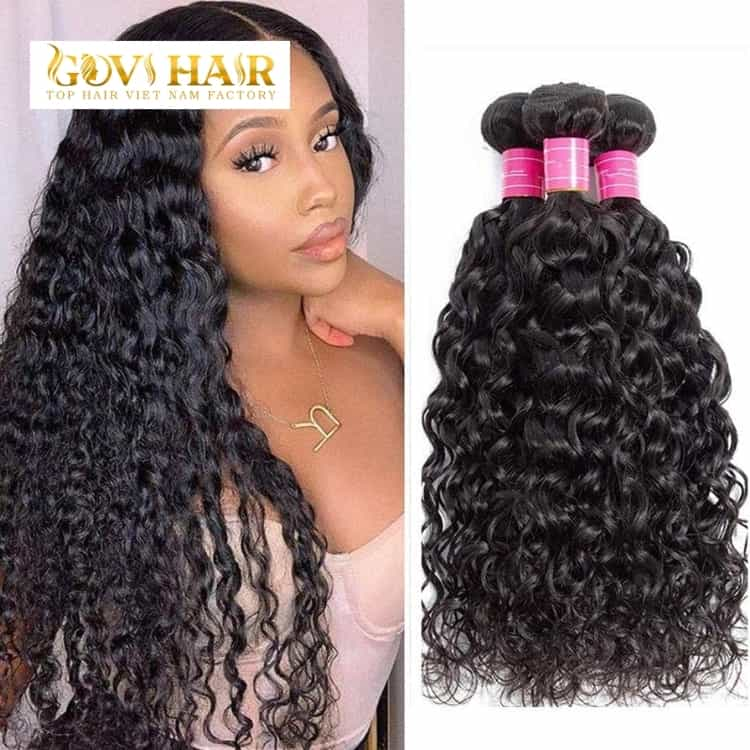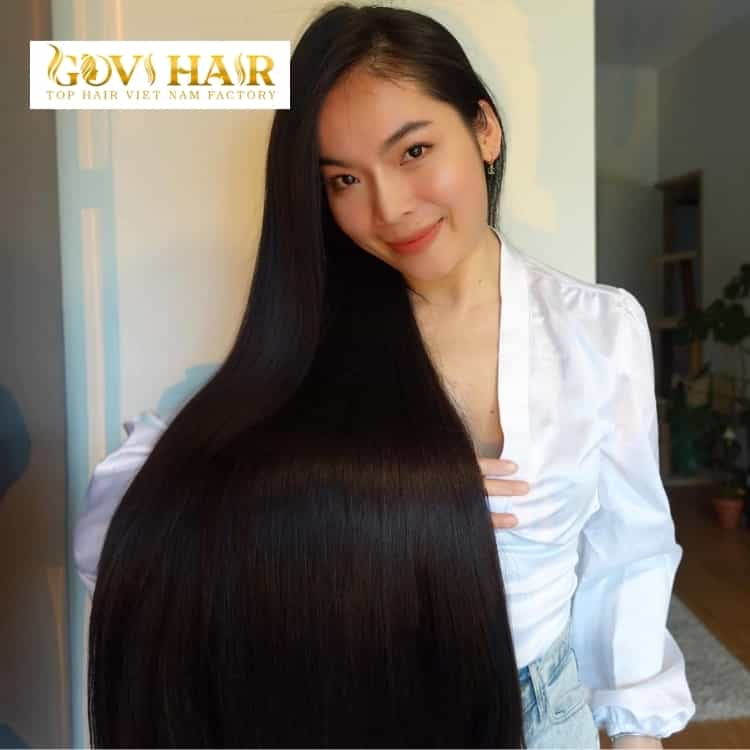Do you know where do human hair wigs come from? Knowing this information, you can know your hair wig’s origin. In the following article, Govihair will list a lot of origin places of hair wigs and extensions as well as assist you in locating reliable hair vendors.
Where do Human Hair Wigs Come From
Real human hair wigs can originate from various sources, and the quality of the hair often depends on its origin. Here are some common sources of human hair used in wigs:
Human hair used in wigs originates from various countries, each known for specific qualities. Here’s a brief description of the hair from some common sources:
Brazilian Hair
Known for its thickness, Brazilian hair is often sourced from donors in Brazil. It is durable, has a natural shine, and blends well with various hair types.

Indian Hair
Indian hair is valued for its fine texture and versatility. It is frequently collected from temples in India, where individuals donate their hair as a religious practice.

Peruvian Hair
Sourced from donors in Peru, Peruvian hair is thick and can seamlessly blend with different hair textures. It is known for its natural luster.

Malaysian Hair
Malaysian hair is soft and silky, sourced from donors in Malaysia. It is prized for its smooth texture and ability to hold curls well.
Chinese Hair
Chinese hair is typically coarser in texture and is sourced from donors in China. It is often used for straight styles.
European Hair
European hair is highly sought after for its fine texture and natural appearance. It is sourced from donors in European countries and is known for its quality.
Mongolian Hair
Mongolian hair is thick and durable, sourced from donors in Mongolia. It is suitable for various hairstyles and textures.
Caucasian Hair
Hair from individuals of Caucasian descent is diverse in texture and color. It is used for wigs that aim to mimic the natural look of Caucasian hair.
Vietnamese Hair
Vietnamese hair is recognized for its strength and smooth texture. Donors in Vietnam contribute to the availability of high-quality hair for wigs.

Do human hair extensions come from the same donor?
Human hair extensions typically do not come from a single donor. Instead, they are often sourced from multiple donors. Here’s why:
Volume and Consistency
To meet the demand for human hair extensions, manufacturers need a significant volume of hair. Depending on the desired length, thickness, and texture, sourcing from multiple donors ensures a consistent supply.
Variety of Textures and Colors
Human hair comes in various textures (straight, wavy, curly) and colors. Sourcing from different donors allows for a diverse range of hair types, enabling the creation of extensions that cater to a broader customer base.
Ethical Sourcing
Reputable suppliers prioritize ethical sourcing practices. They obtain hair through voluntary donations or fair compensation to donors. Sourcing from a variety of individuals ensures that the hair is obtained ethically and with the consent of the donors.
Quality Control
By combining hair from multiple donors, manufacturers can implement quality control measures. They can select and blend hair to create extensions with consistent quality in terms of texture, length, and color.
Hair Availability
The availability of hair from a single donor may be limited. Sourcing from multiple donors helps maintain a steady supply of human hair, meeting the demand of the market.
Are all human hair extensions high quality?
No, not all human hair extensions are of high quality. The quality of human hair extensions can vary based on several factors, including the source of the hair, the processing methods used, and the overall manufacturing process. Here are some key factors that influence the quality of human hair extensions:
Source of the Hair
The origin of the human hair plays a significant role in its quality. Hair from different regions has varying textures, thicknesses, and natural characteristics. Hair sourced from reputable Vietnamese hair vendors and ethical practices is generally of higher quality.
Remy vs. Non-Remy
Remy hair is considered high quality as the cuticles are intact and aligned in the same direction. This ensures a smooth and natural look. Non-Remy hair, where the cuticles may be stripped or not aligned, tends to be of lower quality.
Virgin vs. Non-Virgin
Virgin hair has not undergone any chemical processing, such as dyeing or perming. It is considered high quality because it retains its natural texture and color. Non-virgin hair may have undergone chemical treatments and is generally of lower quality.
Processing Methods
The way the hair is processed and treated can impact its quality. Harsh chemical treatments can damage the cuticles and result in lower-quality hair. Gentle processing methods, such as those used for Remy hair, help maintain the integrity of the hair.
Cuticle Integrity
High-quality extensions retain the cuticle layer, which is the outer protective layer of the hair. Intact cuticles contribute to smooth, tangle-free hair that looks and feels natural.
Are there alternatives to human hair for wigs and extensions?
When choosing natural hair wigs, consider factors like the hair’s origin, quality, and processing. Look for reputable brands that provide information about their sourcing practices and manufacturing processes. By making informed choices, you can support ethical and sustainable practices in the human hair wig industry. There are several alternatives to human hair for wigs and extensions. These alternatives are often chosen based on factors such as budget, ethical considerations, and specific styling needs. Here are some common alternatives:
- Synthetic Hair: Synthetic hair is made from synthetic fibers, typically either heat-resistant or not heat-resistant. It is a more budget-friendly option and comes in a variety of styles and colors. While synthetic hair has improved in quality over the years, it may not have the same natural look and feel as human hair.
- Blended Hair: Blended hair is a mix of human and synthetic fibers. This type of extension aims to combine the benefits of both, offering a more affordable option with a somewhat natural appearance.
- Animal Hair (Animal Fiber): Hair from animals such as horses, goats, or sheep is used in some wigs and extensions. Animal hair can be more affordable, but it may not have the same texture as human hair. Common examples include yak hair and horsehair.
Where do people buy human hair wigs quality?
The quality of a hair wig decides your hair appearance and longevity. Thus, choosing a hair vendor to buy is essential. Govihair, the leading Vietnamese hair factory, is proud of its more than 20 years of experience. Govihair is a nationwide company with offices in Bac Ninh, Da Nang, Ho Chi Minh City, and Hanoi. We use only 100% of Vietnamese human hair to create hair products at factory prices.
Products from Govihair are always guaranteed in terms of the manufacturing method, the supplier of raw materials, and the distribution plan. As a result, Govihair currently boasts tens of thousands of customers worldwide. Here is how to get in touch with us:
- Address: Dong Bich, Yen Phong, Bac Ninh Province, Vietnam
- Hotline: (+84)795746986
- Email: [email protected]
Conclusion, Govihair provides you with a lot of useful knowledge that is a necessary reference for looking for detailed information about where human hair wigs come from. Don’t forget to check out our website for more fantastic information about artificial hair later.









 Ms. Victoria
Ms. Victoria